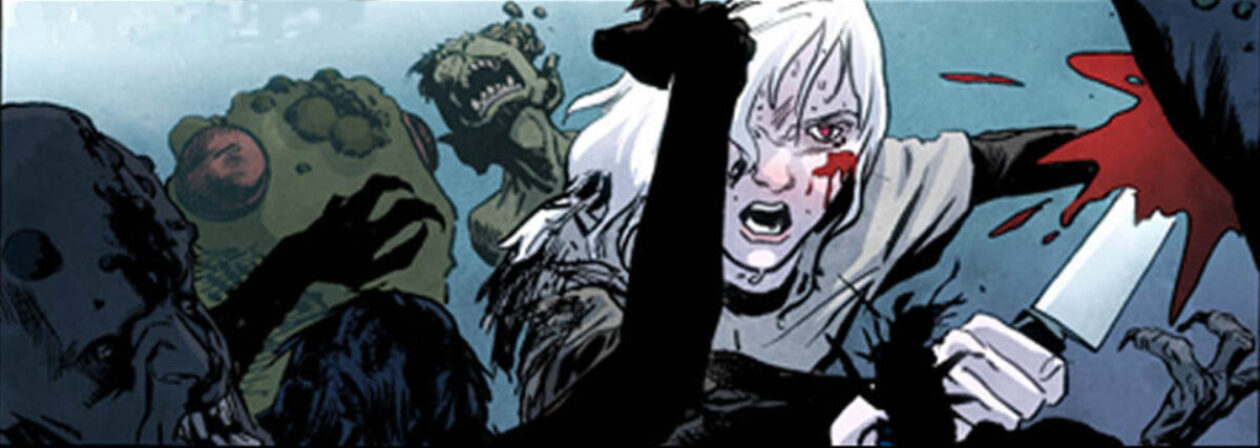There are several strategies involved in tailoring one’s writing to the artist. On the most basic level, it means writing about the things they like to draw and avoiding their weaknesses. If an artist draws conspicuously unattractive women, a writer should keep that in mind when writing a story in which a woman’s beauty is an important plot point. If the artist likes drawing dogs and can depict all the nuances of canine behavior, it’d be a good idea to write something about dogs for him.
Warren Ellis’ “Transmetropolitan: Filth of the City,” despite being a text and illustration book rather than comics, offers some good lessons in this. Flipping through it, it’s remarkable how well the pieces play to the artists’ strengths. Kevin McGuire’s piece would’ve been meaningless if it had been drawn by someone less capable with facial expressions. Carla Speed McNeil’s piece called for her ability to fill a space with funny, manic, perverse characters. Chris Sprouse’s page demanded zooming architectural perspective to make an infinite urinal of The City.
There is a risk of typecasting when a writer does this, but (much as it pains me to say this) typecasting often happen for a reason. Really good writers will sometimes spot previously unrevealed capabilities in an artist and write for that, and the results can be breathtaking. And sometimes they just get lucky and push the artist in a direction he or she was ready to go.
Most of the content of a comics story is in the pictures. Imagine the same script, dilligently illustrated by Charles Schulz, George Perez and S. Clay Wilson. You’d have three completely different stories. Every artist, no matter how hard he works to communicate the writer’s ideas, brings his own understanding of the world to any script he illustrates. A writer with an understanding of his collaborator’s work is better prepared to write stories that make sense in that context.
